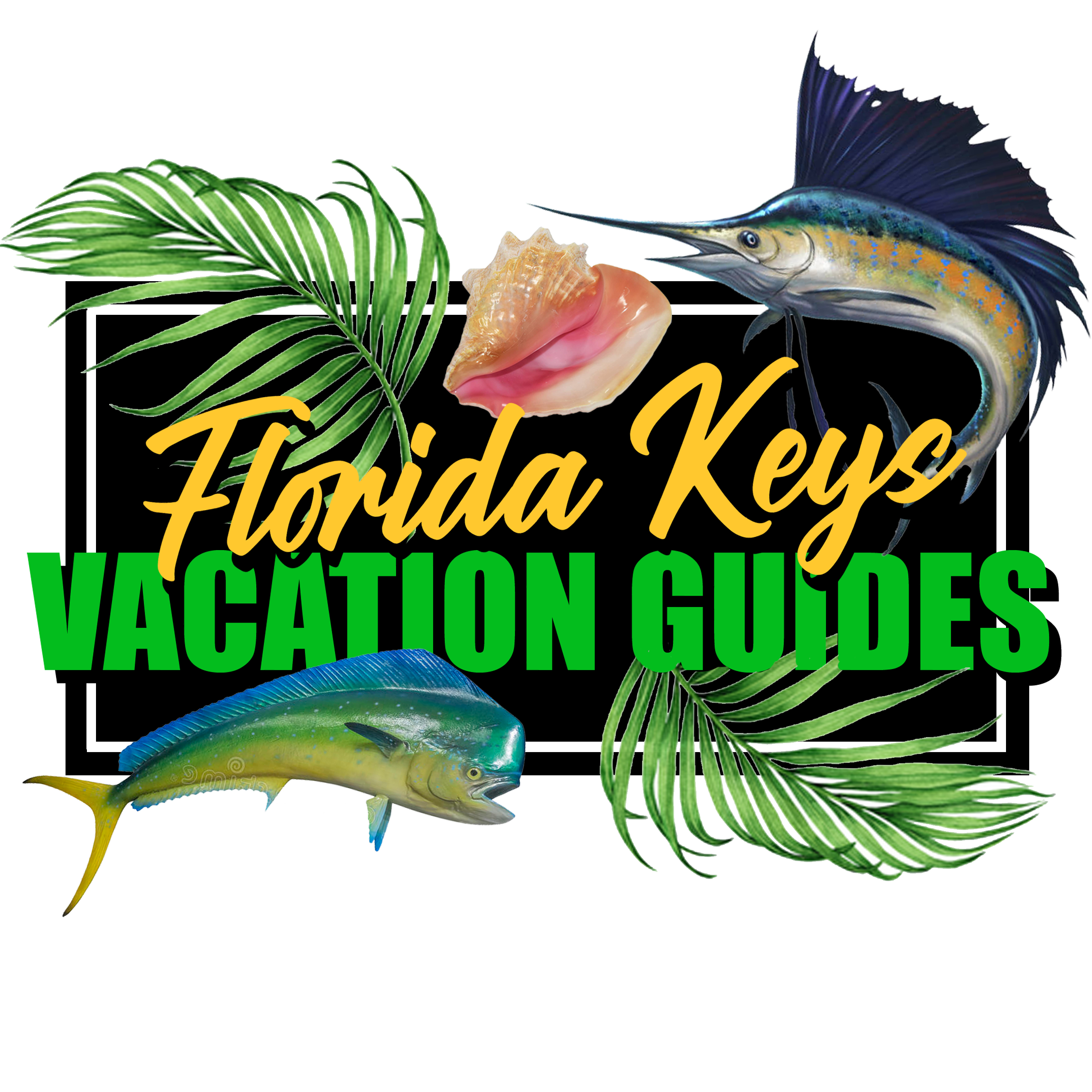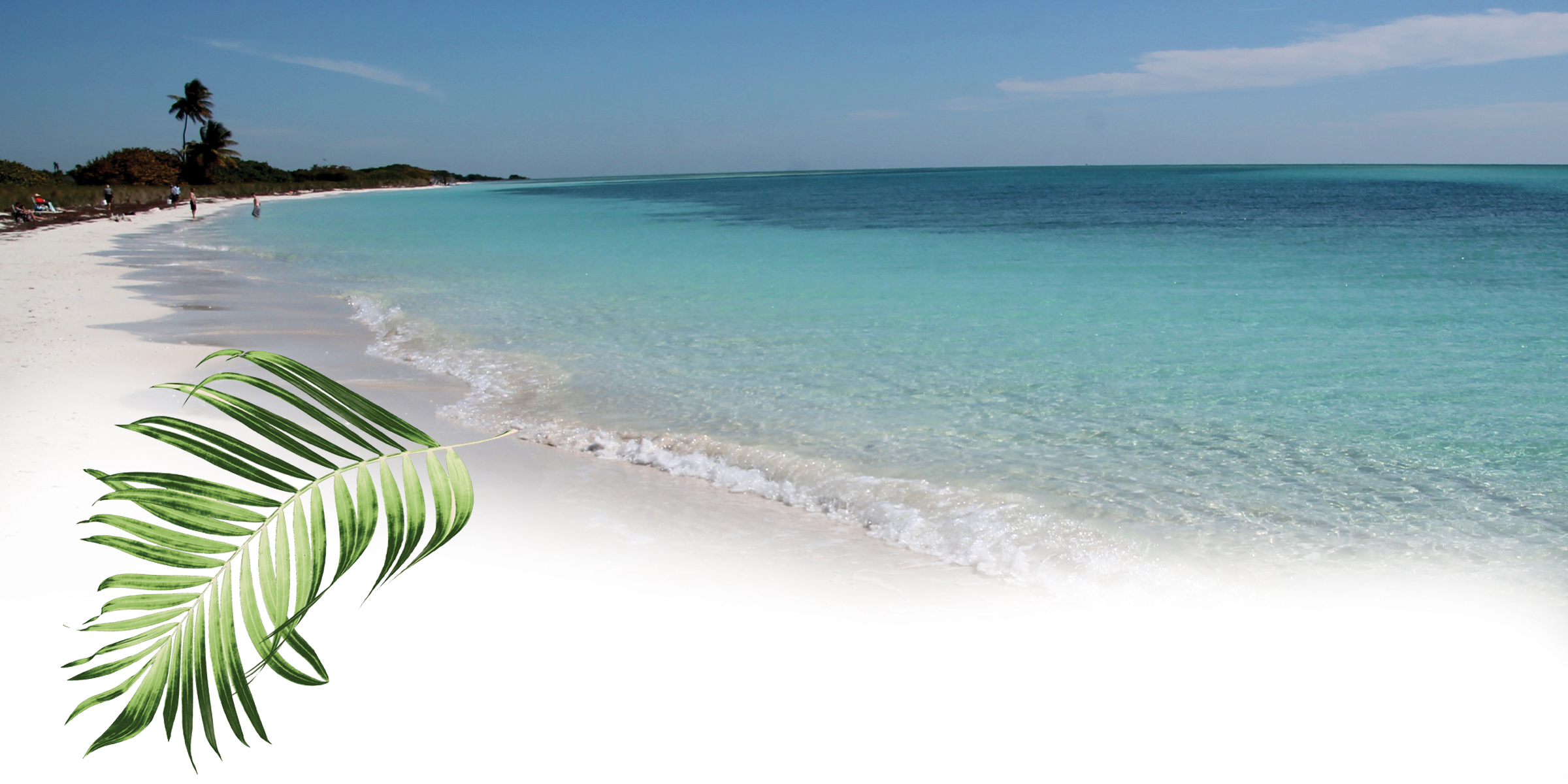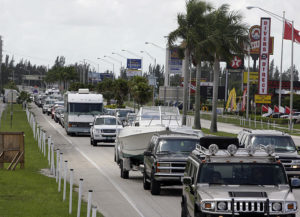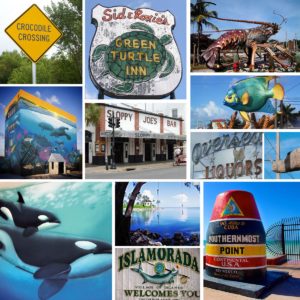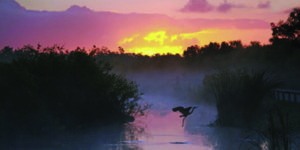
The keys lie just below the mainland of Florida. To get here, you’ll need to fly into one of the mainland airports, either Fort Lauderdale – Hollywood International or Miami International airport, then travel south on the Florida Turnpike for about an hour. The turnpike ends and turns in to U.S. Highway 1, which you’ll travel for an additional 22 miles through the small shanty town of Florida City and a desolate 18 mile stretch through the Florida Everglades. Make sure you have an empty bladder and plenty of gas…you’re heading through Florida’s badlands, a large, shallow river of grass. Buckle up and prepare for the ride – you’re now entering what the locals call “a state of mind.” Looking for cell phone service – forget about it, looking for alligators, crocodiles and wading birds, check, check and check.
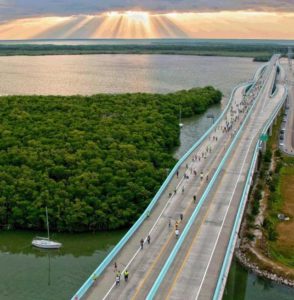
At the end of the stretch, you’ll cross Jewfish Creek bridge, and gain your first glimpse of the water. You’ve arrived in Key Largo, the first island of the keys. Due to it’s proximity to the mainland, it is very lively on weekends and holidays. It is the “Hamptons” of Miami. Day trippers consider it their weekend playground. They flock here in droves to escape the city, fish, snorkel, scuba dive, and party.
10 miles south of Key Largo, you’ll arrive in Tavernier, a quieter island with quaint neighborhoods full of historic conch homes.
Past Tavernier, lies Islamorada, “the fishing capital of the world”. Lots of attractions are located here, including Holiday Isle, Charter Boat Row, the world famous Tiki Bar, Robbie’s Marina, the Sandbar, Bass Pro Shops, Morada Bay (where the Netflix series Bloodline was filmed), and more.
Beyond Islamorada, you’ll encounter quieter residential islands including Matecumbe, Long, Layton and Duck keys. These remote islands are very tranquil, but lack lots of tourist attractions, restaurants and hotels.
Marathon, a larger island, is located at mile marker 50 and is the industrial hub of the keys. It has it’s own small airport, and is home to the commercial fishing industry. Look for the piles of lobster traps that often line the roadside. There’s also a K-Mart, large Publix grocery store, Home Depot, golf course, several marinas, and lots of hotels and restaurants. Sombrero beach is a beautiful public beach located on the Atlantic side of the island.
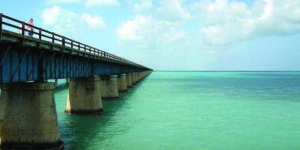
After Marathon the highway narrows as you make your way onto the Seven Mile bridge (often called the eighth wonder of the world). Don’t even think about traversing it without a camera.
After crossing the Seven Mile Bridge, you’ve officially reached the lower keys. The landscape becomes more rugged, less developed and more inhospitable. Look for signs pointing to Bahia Honda State Park. This is a great place to take a break from the road. This 524 acre park is home to a majestic beach. Be sure to stop and see this marvel before hitting the highway again. (See opening photo) seven miles to the next point of interest, the blue hole on Big Pine island. It’s located in a residential community just off the highway. It’s an anomaly, or freak of nature…the source of the only fresh water in the keys. located in a hardwood hammock. It’s existence allows the key deer to exist. They are a diminutive species of deer, the smallest known to exist anywhere in the world. They are about the size of a dog, and are near extinction. If you are in the area near dawn or after dark, travel slowly through the neighborhood to witness them in person.
Seven miles south of Bahia Honda lies Big Pine Island. Big Pine is a large, mostly residential island, and home to the famous diminuative key deer and the famous blue hole, the only source of fresh water in the keys. In Big Pine, you’ll start seeing signs pointing to Key West.
Key West is a historical island that was once the richest city in America. In it’s heyday it was a stop-over for pirates, privateers and rum-runners, and a hideaway for eccentrics, artists and writers like Truman Capote and Ernest Hemingway. The largest tourist attraction in Key West is Duval street. Follow the signs to Duval and park in one of the many municipal parking lots. We recommend taking the Key West Trolley or Train tours first. The stands are located all over the island – and at several spots along Duval street. In under an hour, you’ll gain your bearings and be able to plan your itinerary. You’ll tour the historic neighborhoods with Victorian era architecture, see famous local bars, the lighthouse, beaches, historic graveyard and more. While you are in Key West, don’t miss Mel Fisher’s Shipwreck Museum – It’s a must-see, the museum houses over 400 million dollars in ancient pirate treasure. You’ll see gold bars, Columbian emeralds, and religious relics salvaged from the Spanish galleon the Nuestra Senora de Atocha. Be sure to walk the length of Duval street to see the vibrant sights, shops and restaurants. At the end of the street visit the selfie-worthy Southernmost Point marker. Last, but not least, make your way to Mallory Square for the daily sunset celebration featuring keys artists and street performers.
Enjoy, and send your photos and comments to us at www.floridakeysvacationguides@gmail.com
